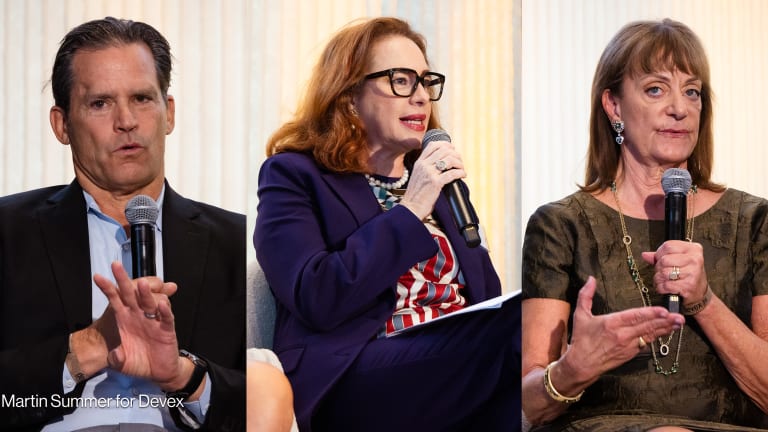
As the World Cup draws to a close and Brazilians look at the facilities left behind and the remaining development challenges, they may take a cue from South Africa and look at how partnerships could help turn them into meaningful centers for change.
In South Africa, which hosted the tournament four years ago, VSP Global, Nike Vision, Marchon Eyewear and the Brien Holden Vision Institute partnered to open an eye clinic in a former training facility built by Nike.
Launched just a few months ago, the “We See” Child EyeHealth Project in Soweto (Johannesburg) that plans to give 30,000 children free eye health services and aims to reduce the number of school children with untreated vision impairment by 90 percent.
The partners shared with Devex some of the lessons they learned in putting together the partnership.
For VSP Global, it was the company’s first project abroad.Matt Alpert, board member and chairman of optometric innovations at VSP Global, would recommend other firms considering such a venture to do a lot of research and identify a project that is sustainable.
See more on impact investing:
● What's next for impact investing: Definitions, measurement and rising expectations
● Impact investing: What’s in it for your nonprofit?
● 10 tips to boost impact investing
● How to win funding from impact investors
● 7 impact investing must-reads
Finding the right partners and collaborating with the government — in this case, with the local departments of education and health — can be helpful to ensure the long-term viability of a program, he said.
“Do what you do best and partner with people to leverage their expertise, skill sets and talents,” Alpert explained.
The Soweto clinic is unique in that it is a true collaboration beyond just a monetary contribution from the corporate partners, noted Kovin Naidoo, responsible for the Brien Holden Vision Institutes’ public health division global programs.
The partnership, he said, is intended to serve a catalytic role in starting the process to expand vision care and is designed for government to take responsibility after a few years.
“When the private sector comes to the party it tends to motivate governments to do more” and bringing together stakeholders is critical to scale, for instance with the the private sector bringing efficiency and accountability and skills like dealing with the media or supply chains, Naidoo added.
Partnerships are a learning process and it’s critical that partners have the same objectives from the start so that they don’t pull a project in different directions, said Andy Skitmore, the senior vice president of Marchon Eyewear.
Taking the necessary time to build the project and ensuring that each step goes as needed so the whole project doesn’t fall apart, he pointed out.
One benefit of partnering with a recognizable brand like Nike is that it can help create trust, Skitmore said. Nike brought in some of their ambassadors, former athletes, to help launch the clinic and generate excitement.
While the focus now is on expanding and scaling the existing programs, if the partnership proves successful they may consider further expansions — even possibly a similar project in Brazil in a few years.
This story is part of a series on impact investing. For more, check out our Storify page on “Impact Investing 2.0: The evolving social finance landscape” and tweet @DevexImpact using #impinv.
Join Devex, the largest online community for international development, to network with peers, discover talent and forge new partnerships — it’s free. Then sign up for the Devex Impact newsletter to receive cutting-edge news and analysis every month on the intersection of business and development.




